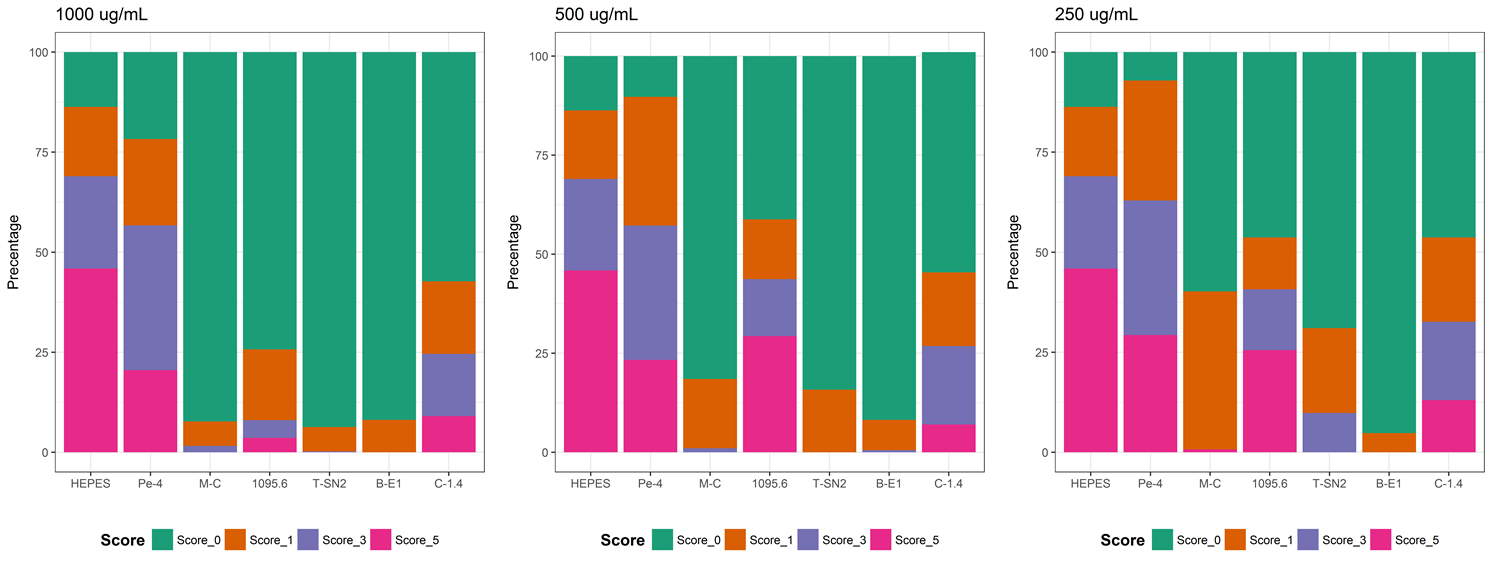Part:BBa_K2262011
T7 Promoter+RBS+B-1E
Introduction
B-1E an antibacterial peptide that has activity against representative Gram-negative and Gram-positive bacterial species [1]. The score of SCM analysis shows its promising potential to be antifungal.
Scoring Card Predict
B-1E got 402.91 from the Antifungal Scoring Card of Parabase System. The score is over 353, the threshold to divide whether a peptide has an antifungal function probability, which means B-1E has a high probability to have an antifungal function.
Experiment
1. Fungal Test
(1) Inhibition Zone
The result shows that the place we put B-1E will have a hole. It means the peptide will affect the growth of mycelium.
(2) Spore Germination
The result shows that the spore germination percentage of non-germinating spores adding B-1E with a concentration of 1000 μg/mL is higher than adding the negative control, which means the spore germination is inhibited by peptides and proves the peptides is effective. We can get the same result from adding B-1E with a concentration of 500 μg/mL and 250 μg/mL.
(3) Botany Experiment
In order to test our anti-fungal peptides, we put B-1E and negative control, double-distilled water, on the flower. The negative control is on the left and B-1E on the right. Both sides are infected with Botrytis cinerea. We checked the flower 3 days later whether the flower was affected or not. The result shows that the right side, which was spread on B-1E, is not infected. It means B-1E has an anti-fungal function in real plant organism.
2. Cloning
We put T7 promoter, RBS, and B-1E together with pSB1C3 as a backbone. Then we conducted Taq PCR to check the size of the DNA sequence was right. The length of T7 promoter+RBS+B-1E is around 153 b.p. Its PCR product is around 465 b.p.
Reference
[1] Morikawa N; Hagiwara; Nakajima T. “Brevinin-1 and -2, unique antimicrobial peptides from the skin of the frog, Rana brevipoda porsa.” Biochem Biophys Res Commun. 1992 Nov 30;189(1):184-90.
Sequence and Features
- 10COMPATIBLE WITH RFC[10]
- 12COMPATIBLE WITH RFC[12]
- 21COMPATIBLE WITH RFC[21]
- 23COMPATIBLE WITH RFC[23]
- 25COMPATIBLE WITH RFC[25]
- 1000COMPATIBLE WITH RFC[1000]
| None |






